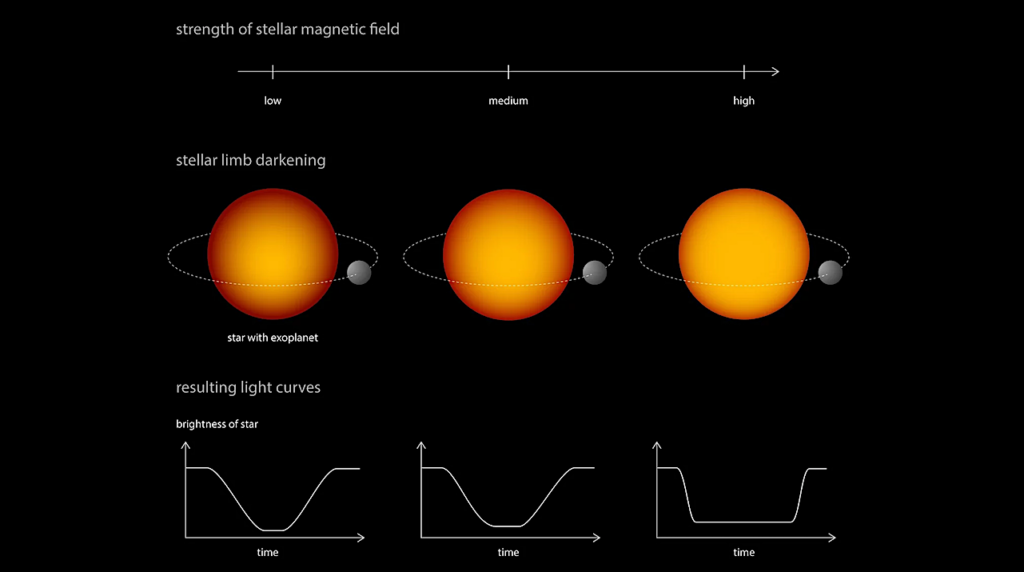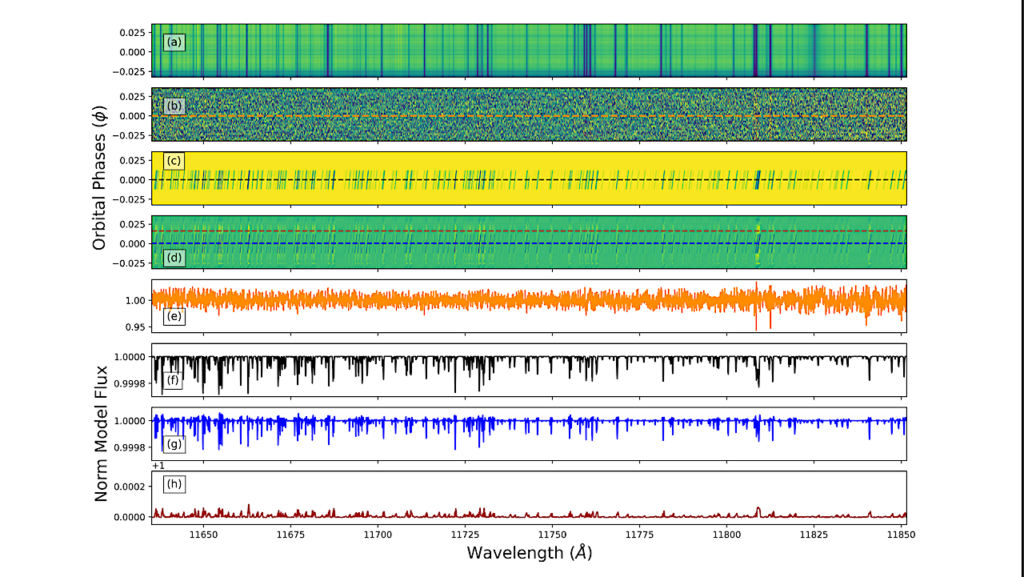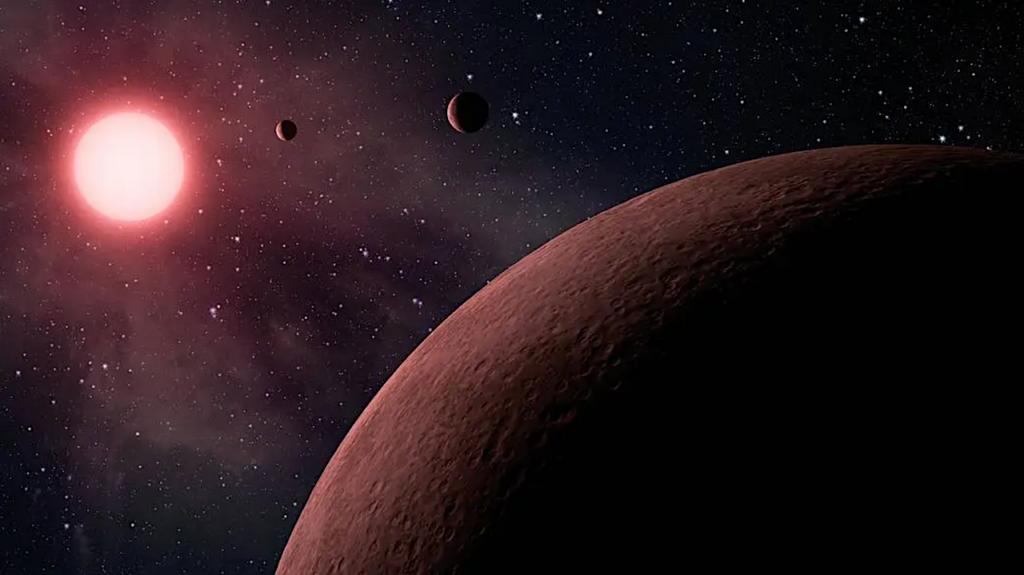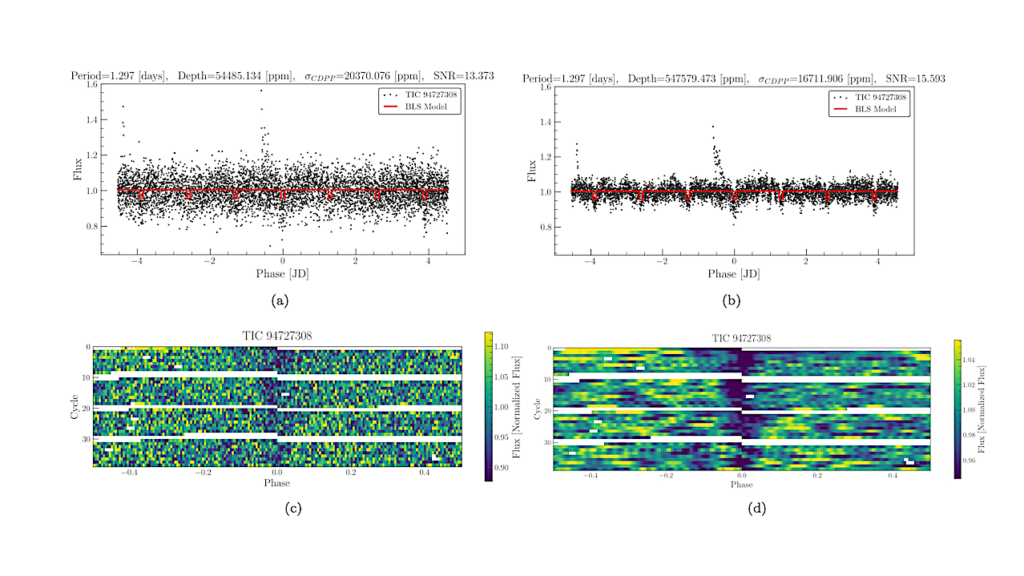Radial-velocity Variations Due To Meridional Flows In The Sun And Solar-type Stars: Impact On Exoplanet Detectability
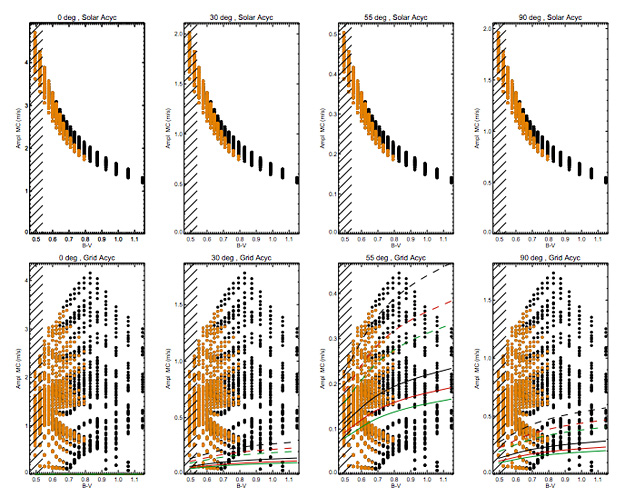
Stellar variability due to magnetic activity and flows at different spatial scales strongly impacts radial velocities. This variability is seen as oscillations, granulation, supergranulation, and meridional flows.
The effect of this latter process is poorly known but could affect exoplanet detectability. We aim to quantify its amplitude when integrated over the disc and its temporal variability, first for the Sun, seen with different inclinations, and then for other solar-type stars. We used long time series of solar latitudinal meridional circulation to reconstruct its integrated contribution.
We then used scaling laws from HD simulations relating the amplitude of the meridional flow variability with stellar mass and rotation rate to estimate the typical amplitude expected for other solar-type stars. We find typical rms of the order of 0.5-0.7 m/s (edge-on) and 1.2-1.7 m/s (pole-on) for the Sun, with a minimal jitter for an inclination of 45-55 deg. This is significant compared to other stellar activity contributions and is much larger than the radial-velocity signal of the Earth.
The variability is strongly related to the activity cycle. Extension to other solar-type stars shows that the variability due to meridional flows is dominated by the amplitude of the cycle of those stars. The meridional flow contribution sometimes represents a high fraction of the convective blueshift inhibition signal, especially for quiet, low-mass stars. Our study shows that these meridional flows could be critical for exoplanet detection. Low inclinations are more impacted than edge-on configurations, but these latter still exhibit significant variability. Meridional flows also degrade the correlation between radial velocities due to convective blueshift inhibition and chromospheric activity indicators. This will make the correction from this signal challenging for stars with no multi-cellular patterns.
Nadège Meunier, Anne-Marie Lagrange
Comments: Accepted in Astronomy and Astrophysics
Subjects: Solar and Stellar Astrophysics (astro-ph.SR); Earth and Planetary Astrophysics (astro-ph.EP)
Cite as: arXiv:2004.10611 [astro-ph.SR] (or arXiv:2004.10611v1 [astro-ph.SR] for this version)
Submission history
From: Nadege Meunier
[v1] Wed, 22 Apr 2020 14:49:54 UTC (1,093 KB)
https://arxiv.org/abs/2004.10611
Astrobiology


